January 24, 2015 – Lots going on over the past few days since my last posting, weather has been darn hot, very windy, overcast and then cool as we have made our way from Los Cabos, Pescadero, Todos Santos to La Paz where we are currently.
We had great time in Los Cabos, everyone enjoys the walkabout in San Jose, even those that have been before on a cruise ship or all inclusive. The swim at Playa Santa Maria is always popular with most, the water was still warm enough to enjoy. A couple of tour boats from the harbour visited as did the jet board dudes that are always entertaining. Our friends Maggie & Ron dropped by to pick up a couple of things they left at Santispac while they were visiting Bruce & Marian. Julio, a Villa Serena RV park resident, got an opportunity to wash some RVs, they look so much cleaner after that trip down Baja. Lots of fun and purchases at the Medano Happy Hour, vendors were out in full force particularly since 6 of the big hotels are not operational yet. We even managed to get some pretty girls on the beach join us for some photos. We did manage to say hi to Dom & Diane’s group who showed up on our 3rd day in Los Cabos. The day we departed we had breakfast with Dom & Diane to review how things are going on tour and catch up on other events, great people, we are lucky to have them as WagonMasters.
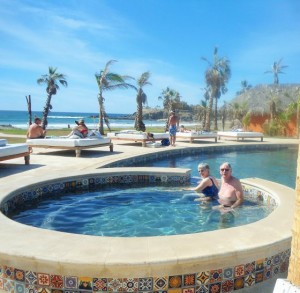
Onwards we journeyed to the Los Cerritos RV Park, associated with the Surf Colony. But first a stop at Afrain & Vivianne’s Blanket Factory. We had been telling folks for some time that if they were interested in purchasing authentic Mexican blankets, hammocks etc. at a reasonable price, they should wait for this stop. They were not disappointed. Just past 11 am we arrived at our destination and got set up, not another RV in site, unfortunately regular RV folks are not prepared to pay $30 per day to sit in a dusty parking lot. We agree the fee is too high however it is important to us that our guests have the experience of the pacific in the tropics. The good news was everything was working, the pool was full and the surf was up. We learned that the fire we witnessed on our arrival with the fall 38 Day tour was the Mountain Shadow RV Park going up in smoke full of RVs. Apparently a farmer started a fire to burn trees brought down by Odile and the fire got away, very sad for all concerned. Later we headed over to La Pasadita for dinner, Jose was ready for us and cooked up some great grub. Not much room for anything else after that.

The next day we stopped at Todos Santos, the Music Festival was on. Always an interesting stop we tried out a new restaurant, Mi Pueblito, very good breakfast at a reasonable price for sure. The gang dispersed many heading to the Hotel California of the Eagles fame. I was in luck and scored a Music Festival Poster, seems like I am collecting these every time we visit Todos Santos. The group were ready to go at 1 pm and we continued our journey to Campestra Maranatha, fist stopping at Walmart where we saw Dave & Darlene from our 38 Day fall tour group. They had already made the move to the Centenerio campground and had to do some last minute shopping. Shortly after arriving Chris & Dixie, Les & Anne (also on our 2014 fall tour) showed up, they were passing by when they saw the caravan. Les & Anne are returning with us on this tour, Chris & Dixie are returning on our February tour. Chris has had some issues with his 2015 F350, (which Ford refuses to warranty because his vehicle is in Mexico, ouch!) and has ordered parts from Texas. Looks like our Quebec guests are dropping off when we leave La Paz and likely to spend some time in Los Barilles and later La Paz, possibly taking in Carnival. Our friends Bud and Joan joined us for a drinl later, we have not seen them for a couple of years as they went to Australia for a winter.

Today we headed off for our 1st tour of La Paz, it has rained a bit so we started our tour with the Malecon. Picked up everyone after 1 pm and heading out again for dinner at 6 pm at Los Magueyes, David & Darlene will be joing us.
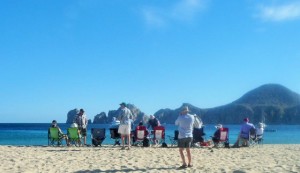
Did you know?
Isla Cerralvo is an uninhabited island located off the Cerralvo Canal coast near La Paz, Baja California Sur, Mexico. In 2009 the Mexican government changed the island name from historical name “Isla Cerralvo” to “Isla Jacques Cousteau” in honor of French oceanographer Jacques Cousteau (1910-1997) who had led many expeditions in this area. It is 18 miles long with a land area of 136.498 km² (52.702 sq mi), and is the ninth-largest island in Mexico. It is part of Municipality of La Paz. The island peak comes to 2,100 ft (640 m) and the ridge line runs north-south with many small streams draining east to Sea of Cortez and west to Cupalo Canal. There are many steep bluffs on the eastern sides and many sandy beaches and points on the west side.
Isla Cerralvo is a prime location for big game fishing as there is abundant marine life surrounding this island due to underwater topography and ocean currents. There are abundant golden grouper, marlin, sailfish, swordfish or broadbill, and other game fish in these waters.

Recent official name change
This name change has generated annoyance and a growing resistance amongst citizens of nearby shores, in Baja California Sur state, who were not consulted; they insist on keeping the name “Isla Cerralvo”. This resistance is also supported by many people in other Mexican regions. Mexican senators Luis Alberto Coppola Joffroy, Sebastian Calderón Centeno and Humberto Andrade Quezada, from Partido Acción Nacional (PAN) initiated a resolution to request different Mexican authorities to inform the decree where change of name was adopted. Also Senator Francisco Javier Obregón Espinoza has introduced a resolution in the Mexican Congress requesting the name change be reversed. Leading Mexican intellectuals such as Miguel León-Portilla (a former UNESCO director) have also voiced opposition to the name change.
Geologic Past
Isla Cerralvo is located within the Sea of Cortez near the southern end of the gulf coast of Baja California and provides an outstanding opportunity to study key geologic relationships relevant to the formation of Mesozoic batholiths that make the crystalline backbone of the Baja California peninsula, as well as the Late Miocene-Pliocene rift history associated with the Pacific-North American plate boundary jump into the Gulf of California. In spite of its strategic location, Isla Cerralvo has received scant geologic study and its geology and relationship to the rest of the peninsula has been largely overlooked. The island occupies the footwall of San Jose del Cabo fault. This major down-to-the-east normal fault exhumed the Los Cabos Block, along with Isla Cerralvo, beginning in the Middle Miocene synchronous with proto-Gulf of California extension. Isla Cerralvo is composed primarily of Mesozoic plutonic and metamorphic rocks cut by mafic dikes. Small areas of sedimentary and volcanic rocks of presumed Tertiary age occur in the west-central and northern regions of the island and carbonate cemented terraces of Pliocene age occur at the southern end of the island. Mesozoic basement is part of the larger Los Cabos Block, which is a major crystalline massif that dominates the southern tip of the Baja California peninsula.

At the north end of the island, a welded rhyolitic ignimbrite was deposited across a thick layer of weakly indurated conglomerate. The clasts in this conglomerate consist almost entirely of schist that appears to be derived from in situ underlying prebatholithic metasedimentary basement. Steeply dipping normal faults truncate the schist/conglomerate/rhyolite sequence on opposing sides and define a small graben structure. These volcanic deposits are presumed to correlate to the Miocene Comondu Group, which surrounds the La Paz area across the channel from Isla Cerralvo. Fossiliferous sandstone/limestone/marl sequences along the west-central coast occupy the hanging wall of a west-dipping normal fault antithetic to the San Jose del Cabo Fault. Pliocene limestone/sandstone terrace deposits have been uplifted along the south coast of the island.

Isla Cerralova Iguanas
Ctenosaura hemilopha, also known as the cape spinytail iguana , is a species of spinytail iguana endemic to Baja California. It is arboreal and primarily herbivorous, although it can be an opportunistic carnivore. Males may grow up to 100 centimeters (39 in) in length, while females are smaller, with a length of up to 70 centimeters (28 in). Five subspecies are currently recognized.
The existence of mainland and insular populations of this species has been valuable in providing biologists with study and control groups comparing the evolution of island populations and their mainland counterparts. The San Esteban Island subspecies (C.h. conspicuosa) coexists with the giant San Esteban chuckwalla, contrary to predictions of ecological niche theory.
Ctenosaura hemilopha was first described by zoologist Edward Drinker Cope in 1863. The generic name, Ctenosaura, is derived from two Greek words: ctenos (Κτενός), meaning “comb” (referring to the comblike spines on the lizard’s back and tail), and saura (σαύρα), meaning “lizard”. Its specific name is a combination of the Greek word hemisus (ήμισυς) meaning “half” and lophos (λοφος) meaning “crest” or “plume”; both are in reference to the animal’s short crest of spines, when compared to other species of its genus.

There are five subspecies of C. hemilopha that are all similar in appearance and habitat.
• C. h. hemilopha occurs on the southern half of the Baja California peninsula, Mexico.
• C. h. conspicuosa is found on San Esteban Island (Isla San Esteban) and Cholludo Island (Isla Cholludo) in the Gulf of California.
• C. h. insulana is found on Cerralvo Island (Isla Cerralvo) 5 miles off the southern part of Baja near La Paz, Baja California Sur.
• C. h. macrolopha is found on the Mexican mainland from Hermosillo, Sonora, south to mid Sinaloa.
• C. h. nolascensis is found on San Pedro Nolasco Island (Isla San Pedro Nolasco).

Distribution and habitat
It is believed that these iguanas may have ended up on the Baja peninsula and the islands because early Seri Indian inhabitants transported them there from the mainland as food sources thousands of years ago. This theory is based on the fact that the coastal distribution on the mainland ends 115km south of Isla San Esteban. Contrary to predictions from ecological niche theory, the species coexists with the giant San Esteban chuckwalla on San Esteban Island. The two species forage for the same plants in the same habitat at the same time of day during the same season, with neither species displacing the other. The cape spinytail iguana makes its den in old woodpecker nests in giant columnar cacti, and in other tree cavities. The most important factors determining the choice of cactus are the existence of other holes, and the cactus height because these types of refuges allow the lizards to feed and bask on the tree, minimizing the risk of predation. The existence of mainland and insular populations of this species has been valuable in providing biologists with study and control groups comparing the evolution of island populations.
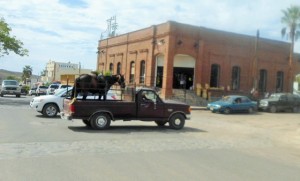
The cape spinytail iguana has a green or yellow coloring when young and turns whitish gray with age. As this animal matures it can be white or light gray in color with black chevrons, depending on heat conditions or even the animal’s temper. Males achieve a maximum length of 100 centimeters (39 in), while females are typically 30% smaller at 70 centimeters (28 in). Males develop large jowls and a dorsal crest made up of larger dorsal spines, making the animal sexually dimorphic. Like most iguanids, the cape spinytail iguana is primarily herbivorous, eating flowers, leaves, stems, fruit, and cactus such as the bushy Jatropha cuneata and the taller, spindly Solanum hindsianum. They will opportunistically eat smaller animals, eggs, and arthropods.

The SCUBA diving and snorkeling areas around La Paz consist of islands, islets, seamounts, coves and white sandy beaches. Some of the best time in the water is during the summer and fall months, when sea life abounds in the warm clear water. The main attraction, at most sites, is the numerous array of inhabitants, full of color and diversity that abound just a panga ride away from La Paz. Whether you are a swimmer, diver or snorkeler, spending a day, or several, an excellent option is with the Cortez Club in and on the Sea of Cortez is an amazing experience!
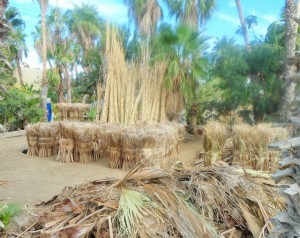
Great dive locations nearby
Balandra Bay is located near the tip of the La Paz Peninsula. This beautiful turquoise bay is great stop for lunch between dives or a snorkel trip around the famous “mushroom of Balandra Bay,” one of La Paz’s most photographed natural monuments. The rocky reef that extends off the peninsula is home to many colorful fish and eels, as well as several species of puffer fish that like to hang out in the sandy areas further into the bay.
Bonanza Beach, located on the southeast side of Isla Espiritu Santo, is a great beach to go snorkeling or for beginners, an easy “walk out” dive site from the beach where huge red crabs sit on the rocks and fish, eels, starfish and sea urchins decorate the reefs.
El Bajo is 8 miles or so to the east from Los Islotes, and is famed for a chance to swim with the “big stuff!” Advanced open water divers find many amazing sea creatures on and around the 3 seamounts, located about 60 feet below the surface. Hammerheads, giant mantas, large schooling fish and even a close encounter with a whale shark is possible here. Octopus, colorful eels and colonies of huge green Panamic moray eels almost seem piled on top of each other in the crags and crevasses of these pinnacles rising up from the ocean floor.

Fang Ming Wreck: At 70 feet maximum depth sits the Fang Ming. She was sunk in 1999 off the west side of Isla Espiritu Santo to create 185 feet of artificial reef and marine habitat for hundreds of fish and mollusks. Quite often a sea turtle takes up residence on the bow. This is a great site for divers, photographers, students and those who might just like to hang around on the conning tower 20 feet below the surface and watch the world swim by.
Isla Ballena (Whale Island) is the largest of 3 islands sitting to the west of Isla Espiritu Santo. Around the entire island, that resembles a sleeping whale on the surface, are many dive and snorkel sites. Surrounded by inlets, caves and huge boulders that taper away from the island, this is a great site for all to enjoy and explore.
La Reyna, a small rock islet, is located north of Isla Cerralvo with a lighthouse and is home to several sea lions, giant manta rays and numerous schools of brightly colored fish. Below the surface are several slight canyons that are host to zebra and jeweled moray eels as they make their way through the gorgonian fans and large structures of brain coral. Pelagic species such as Tuna, Wahoo, Dorado, Hammerhead Sharks and Yellowtail are also known to occasionally make an appearance.

La Reynita is directly off the coast of Isla Cerralvo. This mini-pinnacle has a constant current flowing around it that attracts schools of fish that utilize the constant flow of water for feeding.
Large Groupers, Sea Fans, Brain Corals, and Conger Garden Eels. Additionally, the area is occasionally visited by the Giant Pacific Mantas with wingspans over 12-feet long which can normally only be seen at Socorro Island far south of Cabo San Lucas. Small canyons, arches and walls that rise from the sandy floor create even more habitats for a diverse group of underwater residents.
Los Islotes is where the underwater circus comes to town! Complete with sea lions, sardines and swim-throughs, Los Islotes is famed for nonstop action and fun. Located about a half a mile off the northern tip of Isla Espiritu Santo, these two large rock islets offer endless possibilities for divers and snorkelers. Large schools of blue and gold snapper, King Angels, orange-gold cup corals and chocolate chip sea stars are all right there for your viewing pleasure accompanied by the playful sea lion pups.

Punta Lobos, on the east side of Isla Espiritu Santo, offers divers a chance to explore some of the biggest boulders underwater as they slope away from the island to a depth of around 90 feet. Here amongst the rocks, octopuses, lobsters and giant sea horses are found and the faces of the boulders are covered in colorful gorgonian fans. Don’t forget to look up now and then to enjoy the huge schools of manta mobula passing overhead.
La Punta Norte, this is the northern point of Cerralvo Island and a beautiful dive. With a maximum depth of 60ft (18 meters) we find a maze-like reef teeming with life. Among the Coral Heads play Sea Turtles, Mexican Barracuda, Morray Eels and Shoals of Sergeant Majors.
Salvatierra Wreck, located in the San Lorenzo Channel between the tip of the peninsula and Isla Espiritu Santo, is the remains of the Salvatierra cargo ferry that is still very much intact after striking Swanee Rock in 1976. No lives were lost when the 320 foot ferry went down in about 65 feet of water that has now become a haven for sea life on this thriving artificial reef. Cortez Angels abound, tiny fish and crustaceans hide and even giant groupers are spotted hovering in the remains of the tires and trailers surrounding the wreck.
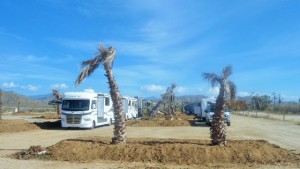
Swanee Reef, fabulous! From 6 feet below the surface to 35 feet deep, Swanee Reef has some of the most diverse sea life, all in one place, than any other site and seems to be buried in millions of fish. Spot tail grunts school by the hundreds while “herds” of Mexican goatfish work their way through the sand with their whiskers. Gorgonians, zebra moray eels and stone scorpion fish sit like sentries on the rocks watching the schools of barracuda swim in lazy circles above the sand. At certain times of the year the male Sergeant Majors lose their yellow stripes as they turn bright bluish purple creating colored nests on the rocks, waiting for their harem of mates to show up.
Whale Shark Expeditions: Generally, the world’s largest fish, the whale shark, tend to hang out in the shallow waters off of El Mogote sand across the bay from La Paz. Swimming with these gentle beautifully speckled creatures can be the beginning or the ending of a perfect day on and in the Sea of Cortez. ¡Disfrútalo!… and don’t forget your camera!

